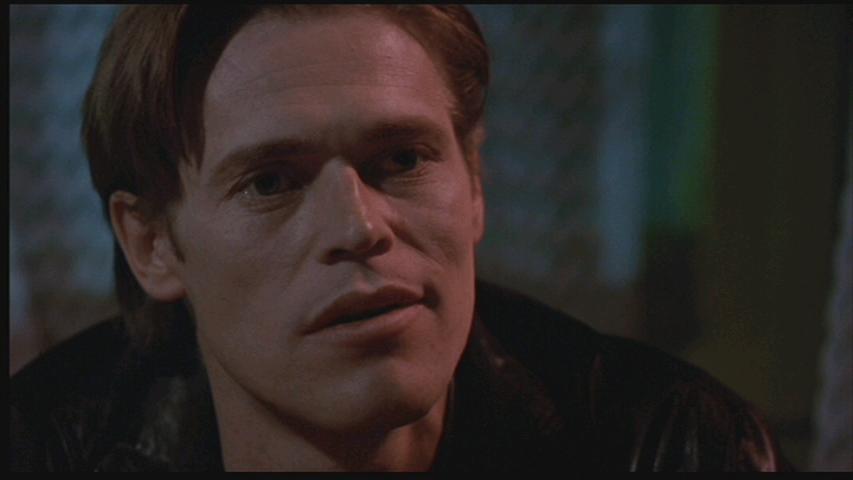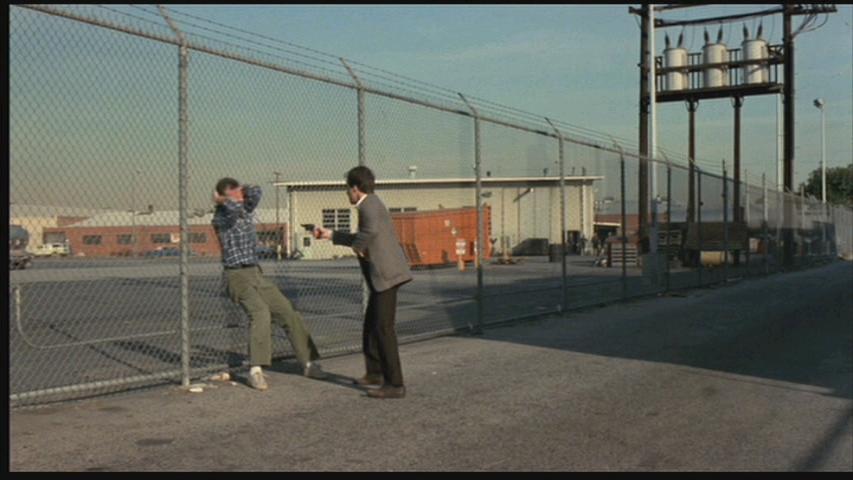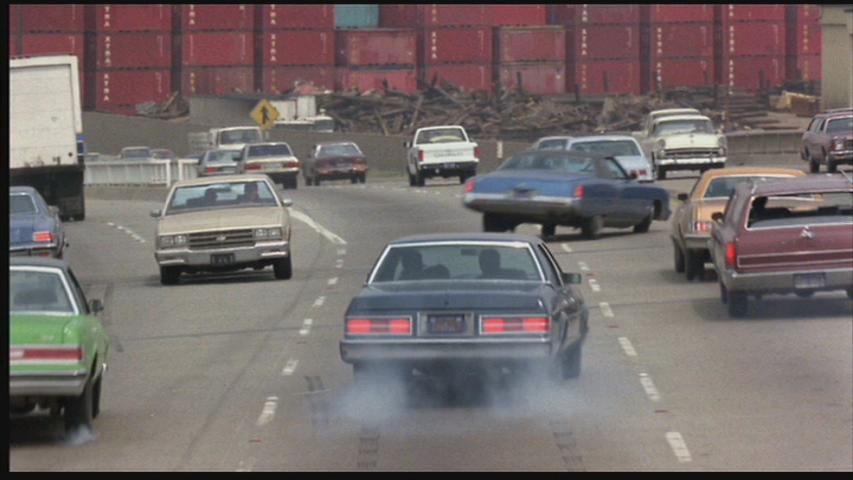|
Genres, Themes, Actors, and Directors:
- Cat-and-Mouse
- Counterfeiting
- Dean Stockwell Films
- Los Angeles
- Police
- Revenge
- Thieves and Criminals
- William Friedkin Films
Review:
Few films define the 1980s as decisively as William Friedkin’s To Live and Die in L.A.: from its synthesized soundtrack to its outlandish fashion sensibilities, every aspect of the film evokes flashbacks to this notorious decade of questionable taste. Stylistic issues aside, however, the film remains a top-notch thriller, one which follows a familiar storyline trope — cop seeks revenge for his dead partner — but is executed with panache and skill. As noted below, Friedkin (ably assisted by cinematographer Robby Muller) makes excellent use of L.A.’s grittier environs, and the lengthy freeway car chase is a worthy follow-up to the infamous chase scene in his earlier cop classic, The French Connection (1971). Performance-wise, stage-actor Petersen isn’t all that charismatic or memorable in the lead role, but he does a fine job showing his character’s moral struggle; however, it’s Dafoe’s cold-hearted criminal who truly shines here, oozing greed and amorality at every turn.
Redeeming Qualities and Moments:
- Willem Dafoe as Petersen’s personal nemesis

- A fascinating glimpse at high-tech counterfeiting

- Excellent use of realistic L.A. cityscapes, streets, and alleys

- A truly exciting freeway car chase

- The “very ’80s” synthesized soundtrack by Wang Chung
Must See?
No, but it’s recommended.
Links:
|
2 thoughts on “To Live and Die in L.A. (1985)”
Director William Friedkin mixes aspects of his Oscar-winning ‘The French Connection’ with a touch of 1980s art-deco-‘Miami Vice’-flash. Bringing a new depth into the ‘cops and robbers’ movie genre. The grittiness and realism that was shown in his earlier films proved to be popular at the time. But coming into the 1980s the formula was becoming a little stale.
The film concentrates more on the fine line between cops and robbers. Proving that they’re not that different and thus could have interchangeable roles. Plus, the added violence, sex (of the kinky-punk type), and the art house feel was brought in. The much discussed freeway chase scene is on par with Friedkin’s own ‘French Connection’ and McQueen’s ‘Bullit’. Stylistic score by ‘Wang Chung’.
Not a must.
Hadn’t seen this til now. This is one of those movies which I went into knowing almost nothing except the basic plot.
It seemed to move economically, since I didn’t really feel the time. And DP Muller’s lush capture of LA gives the film stunning atmosphere. (I’ve since read Muller did not shoot the car chase sequence, apparently claiming he didn’t know how to. Those paying attention will note the sharp departure from Muller’s own style.)
But the film itself just isn’t very good. Or interesting, for that matter. Nothing particularly unique jumps out in the script – but there’s a fair amount of bad (and the occasional unintentionally funny) dialogue.
Director Friedkin has always been a fan of ambiguity – since he prefers revealing the way things often happen in real life as opposed to the movies. (Hence, his ending.) But, here, he doesn’t seem to be a big enough fan of logic: Why are the only two cops on a surveillance watch sleeping? Isn’t one supposed to stay awake, since that’s the job? And, if the second one were to get sleepy, wouldn’t he call in back-up as he got drowsy (since, again, that’s the job he’s been trained to do?); And where, in fact, do ALL of those ‘enemy’ cars come from in the chase sequence? (“Who ARE those guys? They’re EVERYWHERE!”)~especially since the chase route is such a confusing labyrinth for drivers to follow at any given time? Who would know where to drive *to*?
…And the examples don’t stop there.
I won’t say the film is dull – just somewhat annoyingly sloppy. An audience shouldn’t be made to stop in doubt of what they’re watching, as can happen here.
After watching, I checked IMDb – and ‘To Die…’ is considered something of a cult classic. It does have its fans. It also has its detractors – those like myself who felt diverted or distracted when they didn’t want to be.